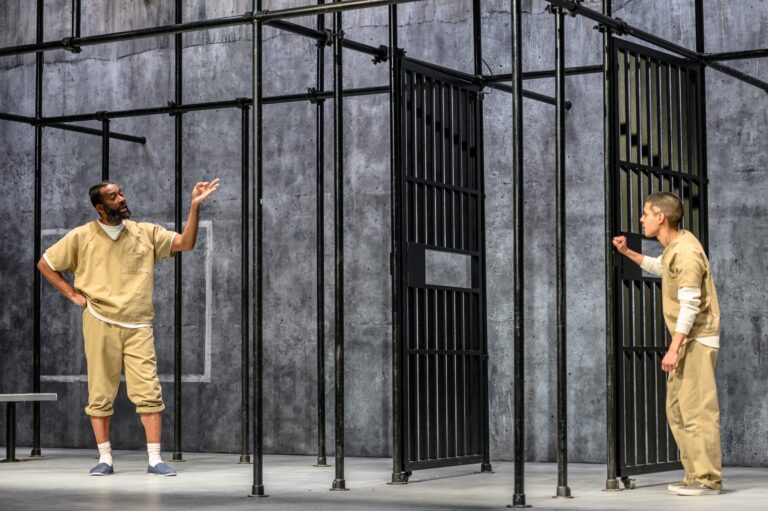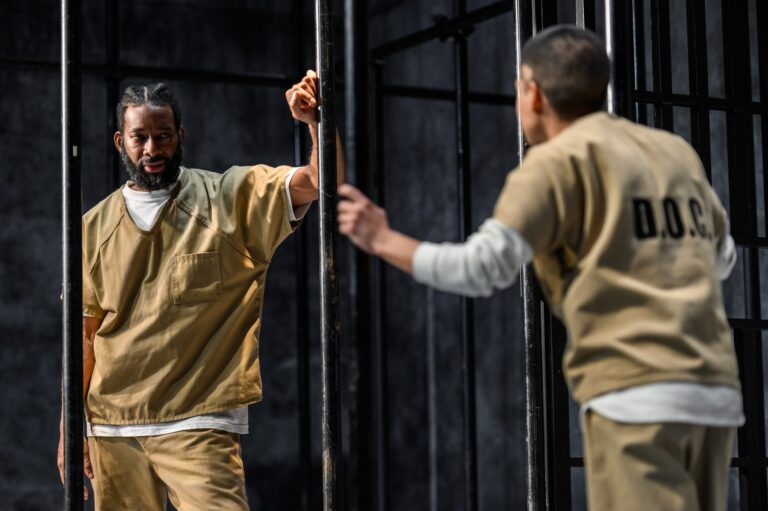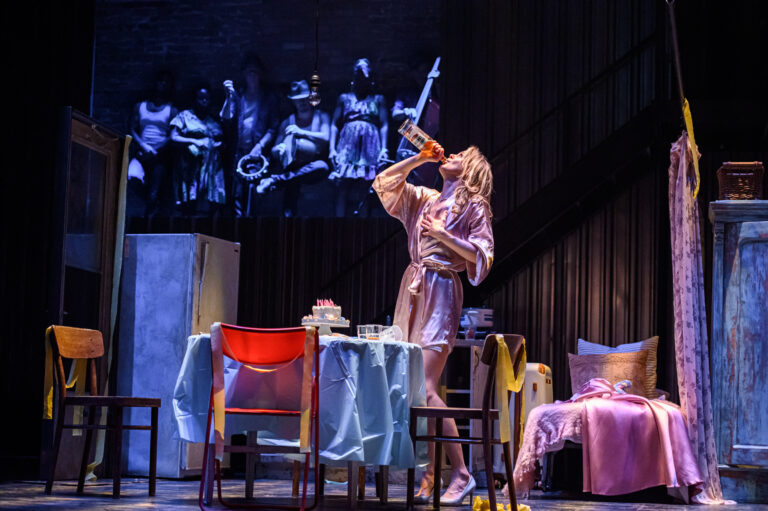REVIEW: A Streetcar Named Desire
Intermission is thrilled to be hosting the inaugural theatre reviews of the Emerging Arts Critics Programme 2019/20 season. Intermission is partnering with Soulpepper Theatre Company and theatre critic Robert Cushman to mentor this season’s participants.
Blanche Dubois has always been an anachronistic figure, a faded Southern belle out of time and place in the chaos of 1947 New Orleans. Try to imagine how she might exist in 2019 – and you have director Weyni Mengesha’s excellent contemporary production of Tennessee Williams’ classic A Streetcar Named Desire, playing now at Soulpepper.
It’s a brilliant piece of theatre, thanks to Mengesha’s deft, subtle modernization. There are no smartphones in this Streetcar, but Stella does wear short shorts, and strains of Cardi B can be heard in an opening sequence. These contemporary touches are discreet; paired with Williams’ original script (without revisions to dated slang), this production embraces a devious timelessness, seeming at once aged and disturbingly current. An opening image conveys this fruitful contradiction: Amy Rutherford’s melodramatic, posturing Blanche is visibly singled out as a historical relic from the very start, poised in an immaculate white suit centre-stage, but lost in the vibrant hustle of modern life in the French Quarter.
Streetcar begins as it means to go on: Blanche’s downfall is inevitable, she’ll spend the play as an outsider, clinging to distorted memories of an idyllic colonial past and refusing to embrace the grim reality of modern life. Mengesha emphasizes this problem repeatedly, presenting the fantasy-obsessed Blanche as the odd woman out, excluded visually from the rest of the ensemble.
The play begins with Blanche’s homecoming, via the play’s titular streetcar, to the apartment occupied by her younger sister Stella (Leah Doz) and Stella’s blue-collar husband Stanley (Mac Fyfe). Having lost her job and the family estate, Blanche must depend for survival upon Stella’s hospitality – and Stanley’s patience, already wearing thin. Blanche is no easy houseguest, taking hot baths in 100-degree weather, babbling about fictional suitors, and barely concealing her disgust for Stanley’s immigrant origins.
Rutherford’s Blanche is a performative pageant queen, sauntering around the apartment in high heels (she looms over most of the other characters) and adjusting her Southern accent to the ear of her current listenerhearer – sliding from a petulant whine to a languid, seductive drawl. Blanche is by nature a performer; she enacts various deceptions on Stella and Stanley, and then on potential suitor Mitch (Gregory Prest), her most devoted spectator. Rutherford plays up this indulgent dramatic act, helped by costumes flowing from her suitcase, a child’s dress-up box of furs and pearls.
It’s a compelling fantasy that’s hard to match, but Fyfe’s Stanley brings the show back down to earth with his aggressive physicality and seething energy – whether passion, rage, or both dangerously combined. Fyfe and Rutherford are this show’s flint and steel, constantly sparking, while Leah Doz’s hesitant Stella tries to keep them apart. Gregory Prest’s endearingly shy Mitch provides comic relief from this conflict, until Blanche tells him one lie too many – and then Prest turns Mitch’s heartbreak ugly and grasping, leaving Blanche alone yet again.
Neither Mitch nor Stella can protect Blanche from Stanley, nor can she protect herself. The apartment is separated into two rooms by a flimsy curtain; this is not only a useful set piece but a symbol of the tenuous divide between Blanche and Stanley and the oppositions they represent: wealth and poverty, women and men, fantasy and reality, death and desire. Blanche clings to the curtain as a partition to maintain her claim to superiority; Stanley tears it aside.
Lorenzo Savoini’s one-room apartment set can hardly contain the play’s subsequent violence. The stage is lined with corrugated metal walls providing a glaring surface for distorting characters’ reflections – and for echoing ominously when Stanley collides with them. The apartment itself has no walls, its boundaries are delineated only by an oft-slammed screen door and well-worn furniture. The effect is surprisingly claustrophobic; despite the expansiveness of the stage, it feels like Williams’ characters are trapped inside a slowly-heating toaster oven or a rattling carnival funhouse. When these invisible boundaries are broken – just once – the disruption is a devastating moment, aided by Kimberly Purtell’s superb lighting design.
This tinderbox of an apartment could be found in any historical production of Streetcar; similarly, Rachel Forbes’ costumes emphasize this show’s flighty relationship with its original and current contexts. Stanley and his buddies are outfitted in jeans and wife-beaters, straight out of a mechanic’s shop in either time – but again, Blanche is the outcast, styled in conspicuously 1940s-inspired pieces: a high-waisted skirt, a collared blouse, an outrageously large sun hat. Debashis Sinha’s sound design and the original music by actor-musicians SATE and Kaleb Horn also play at the timelessness game, mixing old American folk tunes with New Orleans jazz fusion and R&B.
A period production of Streetcar could leave contemporary audiences complacent – tempted to judge Williams’ depictions of sexual abuse and class politics as outdated, viewing the ultimate confrontation between Stanley and Blanche as an aged snapshot from a mercifully departed era. But Mengesha’s experimentations with both the play’s original period and the present moment are much more provocative, precluding any kind of privileged spectatorship. The production ends by confronting us with these conflicts – Blanche, now bereft of her fantasies and in a state of complete collapse, exits the stage for the asylum – and walks out through the audience. The house lights are just warm enough to make you want to look away.
A Streetcar Named Desire runs through October 27 at the Young Centre for the Performing Arts, 50 Tank House Lane. For information and tickets click here.







Comments